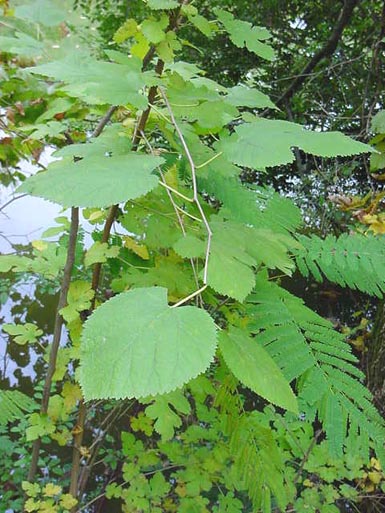Form: Small tree with a spreading, rounded crown; height usually ranges from 15 to 70 ft.
Leaves:
Arrangement: alternate; simple
Shape: orbicular
Margin: coarsely serrate
Texture: scabrous-pubescent above
Venation: pinnate

Bark: The bark is thin, reddish-brown to dark brown, and scaly developing irregular long ridges.
Twigs and buds: It has a relatively slender twig that zigzags and is often pubescent. Buds are covered with overlapping scales.

Flowers and fruit: Male and female flowers are small, green hanging catskins. Catkins appear in April and May. The fruit is similar to a blackberry and forms in clusters. Fruits mature from June to August.
Distinguishing characteristics: Two shapes of leaves, leaves coarsely serrated, fruit similar to blackberry. Sap is milky white.
Range: Massachusetts west to southeastern Minnesota,
south to central Texas and east to southern
Florida.
Silvics: Tolerant. Best growth occurs on moist, well-drained soils of coves and flood plains. It does grows on a variety of soils including clays, sands, and loams. It also tolerates a wide range of soil pH and is often found in pastures and on field borders.
Ecological and cultural importance: It has little or no commercial value but has been used in the past for fence posts, furniture, interior finish, and caskets. Birds and small mammals eat the fruits. Notable species include wood ducks, bluebirds, indigo buntings, gray catbirds, eastern kingbirds, towhees, orchard orioles, brown thrashers, summer tanagers, vireos, red-cockaded woodpeckers, red-bellied woodpeckers, great crested flycatchers, Lewis' woodpeckers, opossums, raccoons, fox squirrels, and gray squirrels. White-tail deer browse the the foliage and twigs and beavers have been know to consume the bark